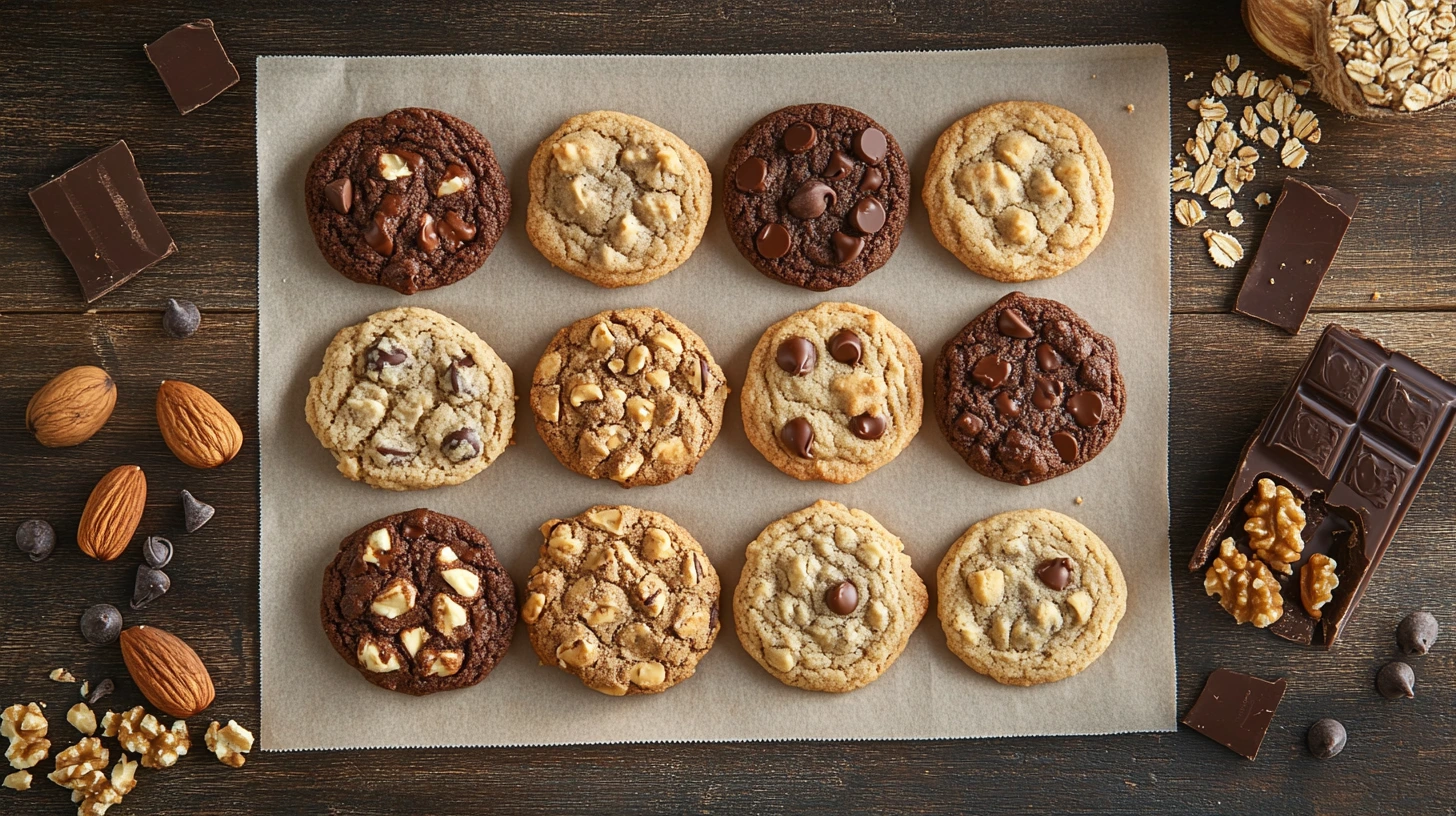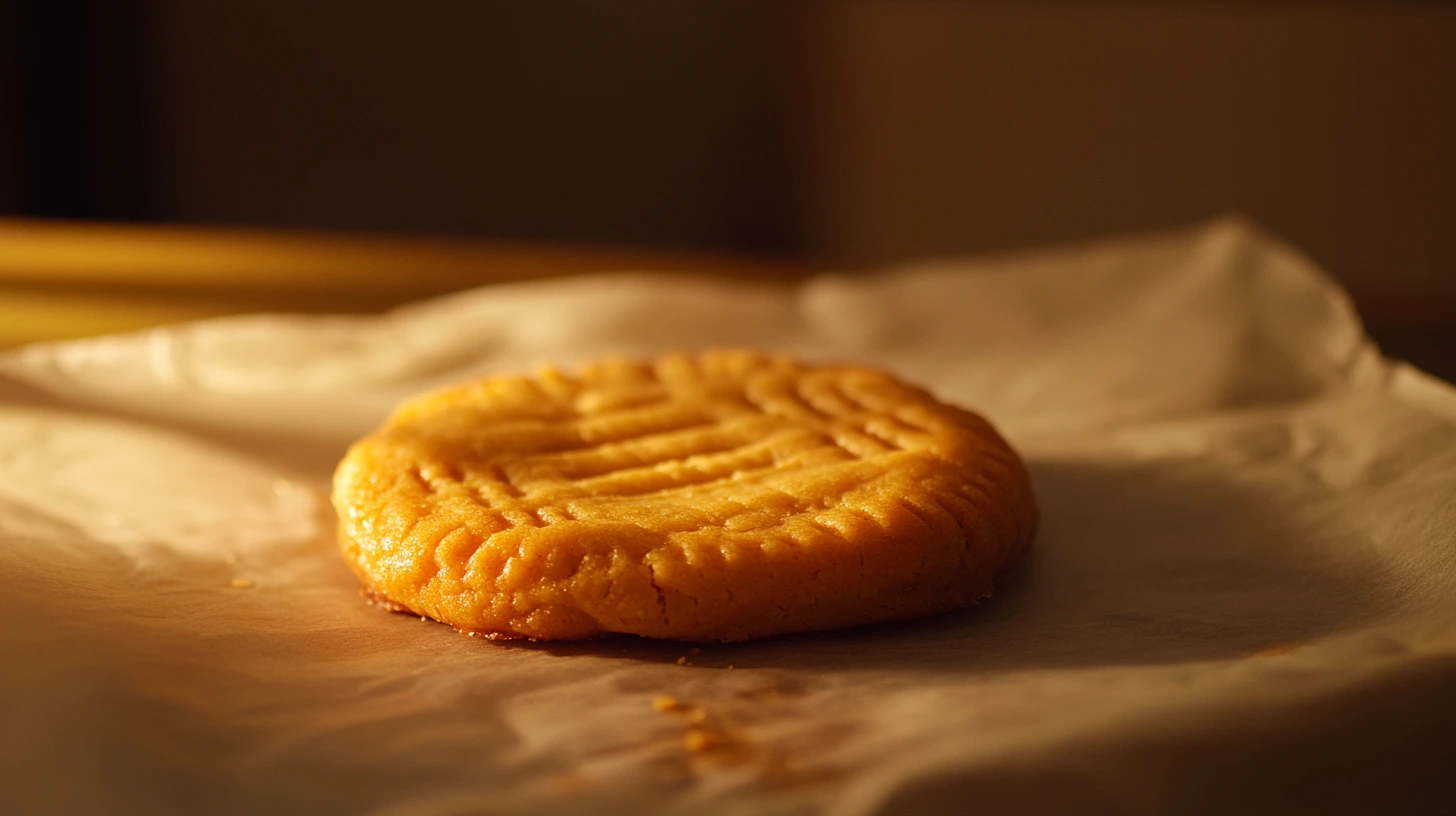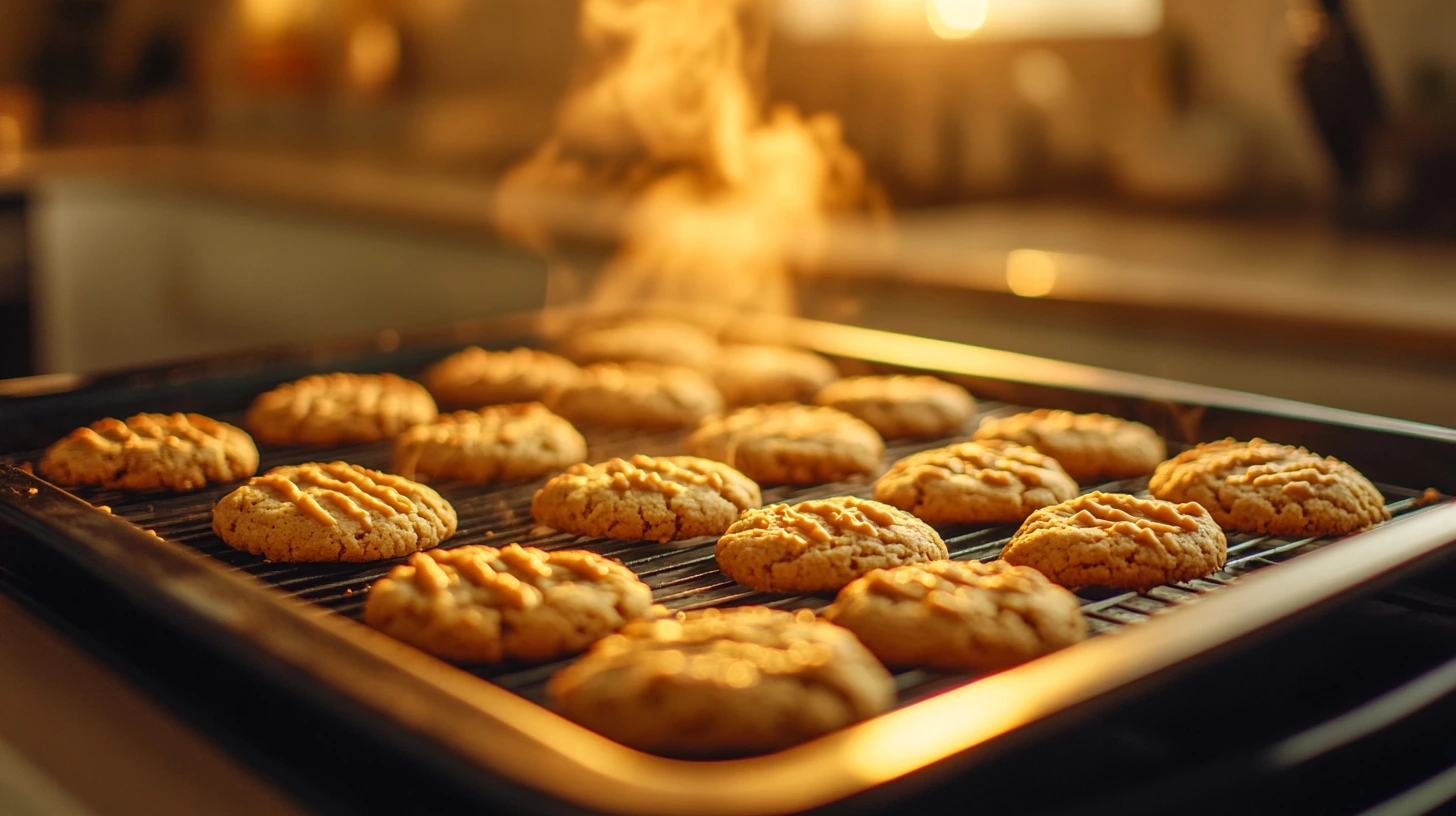Why Are My Cookies Flat?

Introduction: Understanding Flat Cookies
Flat cookies are a common frustration for bakers, especially when the goal is to achieve cookies with the perfect balance of thickness and texture. Understanding the factors contributing to flat cookies and why texture matters can help you troubleshoot and refine your baking techniques.
The Common Struggle with Flat Cookies
Flat cookies often occur when certain aspects of the recipe or baking process are out of balance.
- Possible Causes:
- Butter Issues: Using melted butter or too soft butter can lead to excessive spreading.
- Flour Amount: Insufficient flour results in a batter that needs more structure to hold its shape.
- Oven Temperature: Baking too low a temperature allows cookies to spread before setting.
- Ingredient Substitutions: Using alternatives, such as margarine instead of butter, can affect the final texture.
For many bakers, flat cookies represent a missed opportunity for the ideal texture and appearance, making it essential to understand the underlying issues.
Why Texture Matters in Cookie Baking
The texture of a cookie plays a crucial role in its overall enjoyment and appeal.
- Balance of Chewy and Crispy: A well-baked cookie is defined by the interplay between a soft, chewy center and crisp edges.
- Structural Integrity: Proper texture ensures that cookies hold together without crumbling or becoming too dense.
- Mouthfeel: The right texture enhances the eating experience, making each bite satisfying and flavorful.
Key Factors That Cause Cookies to Be Flat

Flat cookies are often the result of imbalances in ingredients, mixing, or baking techniques. Understanding these factors can help you troubleshoot and avoid common pitfalls in cookie baking.
Overuse of Butter or Fat
The Role of Butter in Cookie Structure
Butter plays a dual role in cookies, adding richness and aiding in spreading.
- What Happens with Too Much Butter: Excess butter can cause cookies to spread too quickly in the oven, resulting in a thin, flat texture.
- How to Fix It: Measure butter accurately and ensure it’s softened but not melted unless the recipe specifically calls for melted butter. For chewier cookies, consider using a combination of butter and shortening, which spreads less.
Insufficient Flour: Why Measurement Matters
The Effects of Too Little Flour on Cookie Consistency
Flour provides the structure and body of cookies.
- What Happens with Too Little Flour: The dough cannot hold its shape without enough flour, causing cookies to spread excessively during baking.
- How to Fix It: Measure flour using the spoon-and-level method rather than scooping directly from the bag, which can lead to under-measuring. Mix in a tablespoon or two of additional flour if your dough feels too soft.
Overmixing the Dough
How Overmixing Impacts Cookie Shape and Texture
Mixing activates gluten, which affects the texture of the cookies.
- What Happens with Overmixing: Overworking the dough can lead to dense cookies that spread unevenly. Excessive gluten development may also result in a tough texture.
- How to Fix It: Mix ingredients until just combined, especially after adding the flour. Avoid prolonged mixing once the dry ingredients are incorporated.
Incorrect Leavening Agent Usage
The Importance of Baking Soda or Powder in Cookie Expansion
Leavening agents are crucial for cookies to rise and hold their shape.
- What Happens with Incorrect Usage: Too much or too little baking soda or powder can cause cookies to spread improperly. Old or expired leavening agents may also fail to activate, resulting in flat cookies.
- How to Fix It: Ensure you’re using the correct amount and type of leavening agent specified in the recipe. Replace old baking soda or powder regularly to maintain effectiveness.
Warm Cookie Dough: The Science Behind Spreading
Why Cooling the Dough Can Prevent Flat Cookies
Temperature plays a key role in how cookies bake and spread.
- What Happens with Warm Dough: Warm or room-temperature dough softens quickly in the oven, leading to excessive spreading.
- How to Fix It: Chill the dough in the refrigerator for at least 30 minutes before baking. Cold dough spreads less, resulting in thicker cookies with better texture.
Cookie Baking Tips to Prevent Flatness

Flat cookies can be avoided with proper techniques and attention to detail. These tips will help you achieve cookies with the ideal shape and texture.
Measure Ingredients Accurately
Why Proper Measuring is Essential for Success
Accurate measurements ensure the right balance of wet and dry ingredients.
- Flour: Use the spoon-and-level method to avoid adding too little or too much flour, which can affect structure and consistency.
- Butter and Sugar: Use measuring cups or a kitchen scale to ensure exact amounts, as slight variations can impact the outcome.
Use the Right Type of Butter
Choosing Between Melted, Softened, and Cold Butter
The state of the butter affects how cookies spread during baking.
- Melted Butter: Produces chewy cookies but can lead to excessive spreading without enough flour or chilling.
- Softened Butter: The most common choice, softened butter creams easily with sugar to create air pockets for light and fluffy cookies.
- Cold Butter: Ideal for some recipes like shortbread, where minimal spreading is desired.
Chill the Dough Before Baking
How Chilling Dough Helps Maintain Shape and Texture
Refrigerating cookie dough stabilizes the fat and improves texture.
- Why It Works: Cold dough spreads less quickly in the oven, resulting in thicker cookies. It also allows flavors to develop for a richer taste.
- How to Do It: Chill the dough for at least 30 minutes or up to 24 hours. For the pre-scooped dough, place balls on a tray, cover them with plastic wrap, and refrigerate.
Ensure an Accurate Oven Temperature
The Role of Temperature in Cookie Baking
An incorrect oven temperature can lead to uneven spreading or undercooked cookies.
- Why It Matters: Too low a temperature causes cookies to spread before setting, while too high a temperature can burn edges without cooking the center.
- How to Ensure Accuracy: Use an oven thermometer to confirm the temperature. Preheat fully before baking, and avoid opening the oven door frequently.
Use the Correct Type of Sugar for the Right Texture
The Difference Between Brown Sugar, White Sugar, and Granulated Sugar
The type of sugar used significantly impacts the cookie’s texture and flavor.
- Brown Sugar: Adds moisture and creates a chewy texture due to its molasses content.
- White Sugar: Encourages spreading and creates crisp edges.
- Granulated Sugar: Balances moisture and structure, often combined with brown sugar.
- Best Practice: Adjust the ratio of sugars based on the desired texture. For chewier cookies, increase brown sugar. For crispier cookies, raise the white sugar.
What Happens If You Don’t Fix Flat Cookies?
Flat cookies may still taste good, but they often have texture and appearance issues that can detract from the overall baking experience. Understanding the impact of these problems highlights why addressing flat cookies is essential.
Texture Problems Beyond Flatness
Other undesirable texture issues usually accompany flat cookies:
- Overly Crispy or Brittle: Excessive spreading often results in thin cookies that bake too quickly, leading to crispness throughout without a chewy center.
- Greasy Texture: Flat cookies may indicate an imbalance in fat-to-flour ratios, which can leave cookies with an unpleasant oily feel.
- Lack of Structure: Without the proper thickness, cookies may crumble easily or lack the satisfying bite of a well-structured cookie.
The Role of Flattened Cookies in Baking Success
Flat cookies can affect the success and versatility of your baking:
- Aesthetic Appeal: Too-flat Cookies may look less appealing, especially compared to thick, uniform cookies with defined edges. This is especially important for events or gifting.
- Recipe Dependence: Flattened cookies might not work in recipes that call for specific shapes or textures, such as sandwich cookies or layered desserts.
- Flavor Development: The thin structure of flat cookies can lead to uneven baking, with overcooked edges and underdeveloped flavors in the center.
Other Troubleshooting Tips for Perfect Cookies
Every detail matters when aiming for consistently perfect cookies. These factors can make a big difference in your results, from the baking sheet you use to how you store and handle your dough.
The Importance of Using the Right Baking Sheet
The type and quality of your baking sheet can significantly impact how cookies are baked.
- Non-Stick vs. Regular Baking Sheets:
- Non-stick sheets can cause cookies to spread more, as the surface is slicker and holds less heat.
- Regular baking sheets with parchment paper or silicone mats provide better control and even baking.
- Dark vs. Light Baking Sheets:
- Dark baking sheets absorb more heat, potentially leading to over-browned or crispy cookies.
- Light-colored sheets are preferred for even baking and achieving a soft texture.
- Insulated Baking Sheets:
- These prevent over-browning and are ideal for delicate cookies. However, they may result in longer baking times.
Cookie Dough Storage and Handling Tips
Proper cookie dough storage and handling can enhance its flavor and texture while ensuring consistent results.
- Refrigerate or Freeze Dough:
- Refrigerating dough for at least 30 minutes firms it up, preventing excessive spreading during baking.
- For long-term storage, freeze dough in pre-portioned scoops or as a log for slice-and-bake cookies. Freeze for up to 3 months.
- Avoid Overworking the Dough:
- Overhandling dough, especially after chilling, can warm the butter or fat, leading to uneven spreading. Handle the dough quickly and gently to maintain its structure.
- Bring Dough to Optimal Temperature:
- Allow refrigerated dough to sit at room temperature for 5–10 minutes before baking for better shaping and even baking.
- Avoid baking completely frozen dough unless specified, as it may cook unevenly.
FAQs
What is the most common reason for flat cookies?
The most common reason for flat cookies is using too soft or melted butter. This causes the dough to spread too quickly in the oven before it has time to set. Insufficient flour or skipping the step of chilling the dough can also lead to flat cookies.
How can I make my cookies more puffy?
To make your cookies more puffy:
- Chill the dough before baking to prevent spreading.
- Add a bit more flour to increase the structure.
- Use baking powder instead of baking soda for a slight lift.
- Ensure your oven is fully preheated to set the cookies quickly before they spread.
Can I fix flat cookies after baking?
While you can’t change their shape, flat cookies can still be repurposed:
- Crumble Them: Use as toppings for ice cream or yogurt.
- Layer Them: Incorporate into trifles or parfaits.
- Dip Them: Dip flat cookies in melted chocolate for added texture and flavor.
Does using cold butter help prevent flat cookies?
Cold butter can help reduce spreading, especially in recipes that call for cutting butter into the flour (e.g., shortbread). However, softened butter is recommended for most cookie recipes to achieve the desired creaming consistency with sugar. The key is to avoid overly soft or melted butter.
Should I use parchment paper for baking cookies?
Yes, parchment paper is highly recommended. It prevents sticking, promotes even baking, and makes cleanup easier. Silicone baking mats are another excellent option with similar benefits. Avoid greasing the baking sheet, as it can cause excessive spreading.
How can I tell if I overmixed my cookie dough?
The following signs can identify overmixed cookie dough:
- Tough or Dense Dough: The dough becomes overly elastic and difficult to shape.
- Flat or Tough Cookies: Baked cookies may lack the desired crumbly or tender texture.
- Lack of Spread Control: Excessive gluten development can cause uneven spreading during baking.
- To avoid overmixing, mix ingredients until combined, especially after adding the flour.
Conclusion: Mastering the Perfect Cookie
The Satisfaction of Baking Perfect Cookies
There’s nothing quite as rewarding as pulling a tray of perfectly baked cookies out of the oven. Whether soft and chewy or crisp and golden, achieving your desired texture and flavor brings a sense of accomplishment and joy. Baking cookies is more than just following a recipe; it’s a creative process that lets you experiment, personalize, and share delightful treats with others. Perfecting your cookie technique ensures every batch becomes a source of pride and pleasure.
Why Understanding Cookie Science Leads to Better Results
Cookies may seem simple, but their success hinges on the balance of ingredients, techniques, and baking conditions.
- Precision Matters: Understanding how butter, sugar, flour, and leavening agents interact allows you to tweak recipes for your ideal results.
- Prevention of Issues: Knowing the science behind flat cookies or harsh textures helps you troubleshoot problems before they arise.
- Room for Creativity: When you master the basics, you can confidently explore variations and create cookies tailored to your taste.
Combining technical knowledge with a love for baking allows you to consistently produce cookies that look and taste amazing, becoming a true cookie master. Happy baking!
